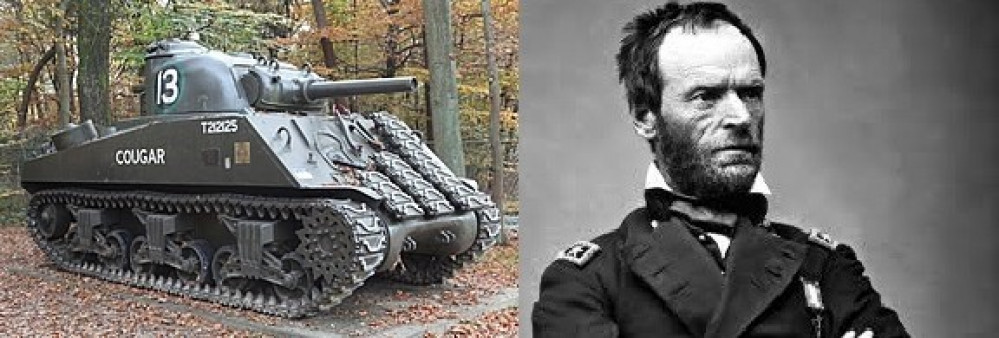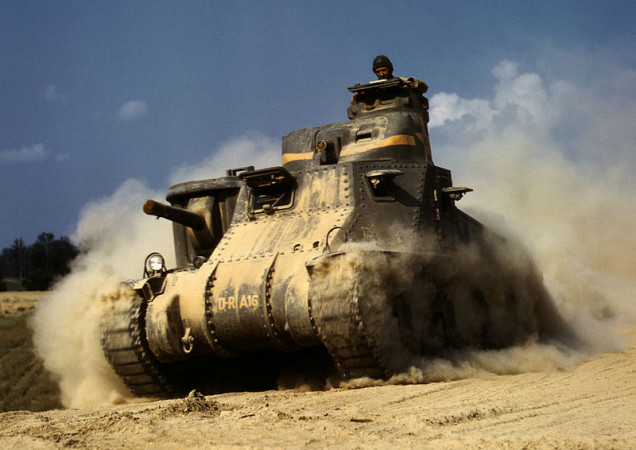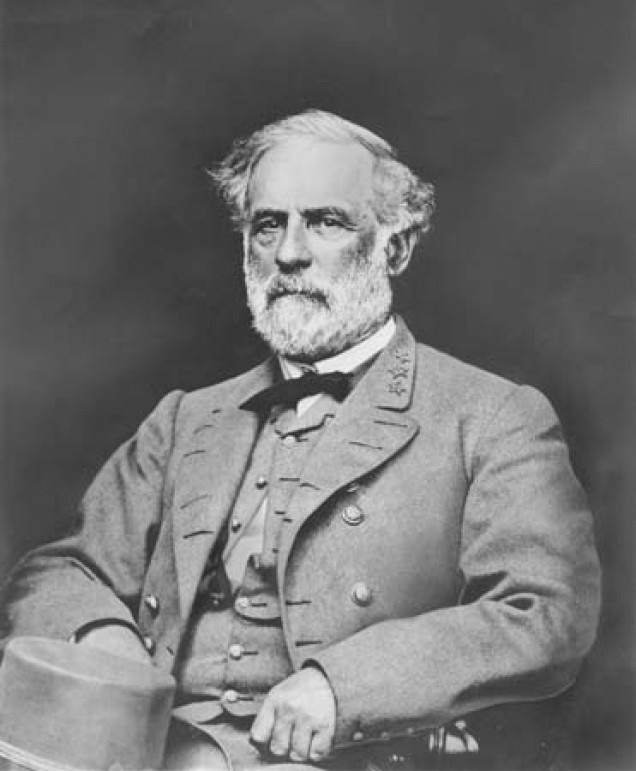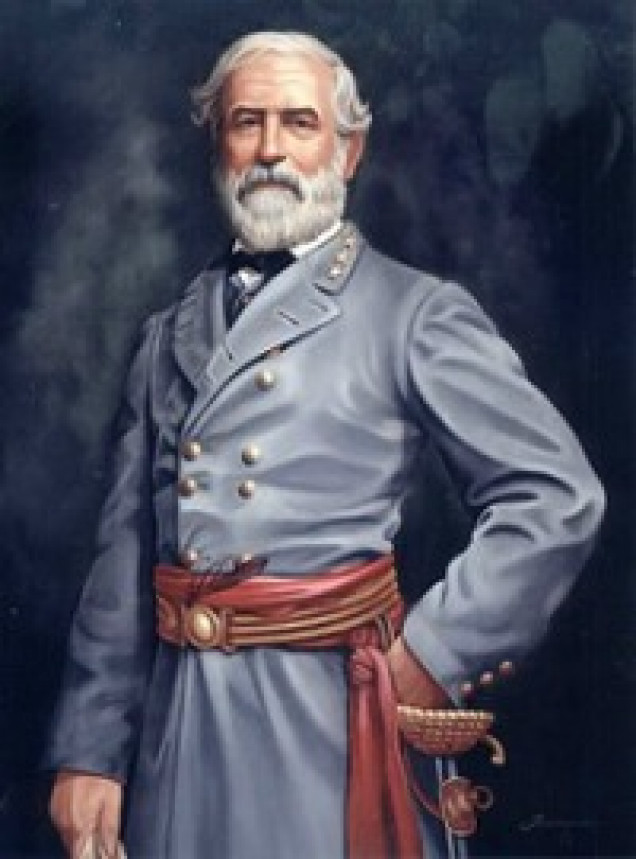
Who Was Your Daddy and What Did He Do
M3 Lee
It’s riveted, it’s got a sponson gun, it’s tall and it’s only got a light anti tank gun in the turret but the M3 Lee gave the Commonwealth Army a medium tank to throw up against the German Panzer IV’s and Panzer III’s in toe to toe engagements. It’s the US Version of the M3 medium Tank and it’s just arrived in the Desert.
The Lee sported a 75mm Gun in the Hull/Sponson that was capable of firing both Anti Tank and HE rounds which many of the currently serving British tanks couldn’t do. Along with the 75mm the Lee had a 37mm gun mounted in a turret with a smaller turret on top of that with an MMG because well this is the American version and at this point they absolutely had to just stick Machine Guns anywhere they could, the previous M2 had FIVE MG’s for goodness sake.
But who is it named after? Why this guy of course
Robert Edward Lee better known as Robert E. Lee was the Son of Henry “Light Horse Harry” Lee who served with distinction during the American Revolution although his behaviour afterwoods bought some shame on is family.
Lee joined the Military at the age of 18 and went into the Engineers where he had a hand in mapping several state borders and mapping several rivers. When the Mexican-American War started in 1846 Lee got himself appointed as one of General Scott’s Aide’s and served with great distinction scouting alternate routes that the army could use that were more lightly defended than the more obvious roads. Lee even lead men across a Lava Field at the Battle of Contreras which is straight out of Warhammer 40K if you ask me.
Lee then became the head of West Point from 1852-55 when he then transferred to the Cavalry where he protected settlers from hostile Native Tribes. He was forced to return home to Virginia after he inherited his Father-in-Law’s estate which needed a lot of work and attention. Although Lee considered slavery evil and immoral he was cruel and worked his new slaves hard in order to pay off the large debts his Father-in-Law owed. Lee’s paradoxical position on slavery would haunt him for the rest of his life, unable to reconcile his actions and beliefs.
Lee commanded the US Marines who put down the failed “Harpers Ferry Raid” led by John Brown and his band of abolitionists. Lee then went back to his unit in Texas which was surrendered to the Confederacy when Texas succeeded from the Union. Lee then returned to D.C. and received a promotion to colonel of the 1st US Cavalry. Lee was then offered a promotion to Major General and a place in the Union high Command but he declined the offer as Virginia had succeeded and Lee could not fight against his own State.
Lee was soon made a full General in the Confederate Army and suffered some early setbacks during the beginning stage of the war. Lee’s reputation was soon made good at Savannah Georgia 1862 where he successfully defended the town and prevented it’s seizure by the Union for another two years when General Sherman took the city in 1864. Lee’s use of trenches and defensive works even in non-siege related battles earned him the nickname “King of Spades”.
Lee returned North and took part in the Peninsula Campaign where he succeeded the wounded General Johnston and finally got command of the Confederate Army. The army was then renamed the “Army of Northern Virginia” and adopted the now famous “Stars and Bars” as it’s Battle Flag although the Battle Flag of the Army of Northern Virginia was square and not rectangular as is commonly seen today with the commonly named “Confederate Flag”, the rectangular version is closer to the CSA Naval Jack.
Lee spent the next few weeks strengthening his army before launching the “Seven Days Battles” that would catapult him to fame in the Confederate Army. With fewer men Lee drove McClellan from the Peninsula ending the threat to Richmond and starting the Confederate advance into the North. Lee’s victory during the Seven Days Battles was a deciding factor in Lincoln’s “Emancipation Proclamation” which freed all Southern Slaves, however Lincoln did not officially announce the Proclamation until after the Battle of Antietam.
Lee then won the Second Battle of Bull Run (Second Manassas) and invaded the Union, although to be fair Maryland had tried to succeed but Federal Troops arrested the legislature (along with a lot of innocent people) before they could vote.
Lee split his forces but was forced to bring them together again near the Antietam Creek where both sides prepared for what would become the deadliest day in US history, it remains so to this day.
Antietam was a close fought Battle, the Confederates deployed their entire force while the Union hesitated to commit all their forces believing the Confederates to have more men than they actually did. Although the battle was a draw the Union were left in control of the field and so claimed a victory, Lee and his army retreated back to the Confederacy.
Antietam was bad, very bad. 4,000 Dead, 15,000+ Wounded or missing and a once full cornfield left with not one single stalk standing.
To compare the most Deadly Battle of the Revolution was the Battle of Oriskany, known to many of you no doubt because of the mighty @oriskany here on OTT/BoW, which resulted in between 400-500 deaths and a handful of men wounded.
The Normandy Landings on D-Day resulted in 7,000 Casualties
Around 3,000 People were killed at Pearl Harbour which is about the same as the number of people who died on 9/11.
So to get an idea of how devastating the Battle of Antietam was let’s adjust the casualties to 1944 levels and project those Deaths onto Normandy. The Battle of Antietam is the equivalent to 83,600 US Casualties on D-Day. It was a giant Battle and I’ve heard estimates of one man shot every two seconds.
The most hard hit Regiment of the Battle were Hood’s Texan’s who suffered 1,786 casualties out of only 2,000 men who started the Battle.
After Antietam Lee took part in the Battle of Fredericksburg which was both the first crossing of a river under the direct fire and observation of the enemy and the first urban warfare in the History of the united States. The Confederates had established themselves behind a stone wall on Marye’s Heights where they repulsed Union attacks forcing some men to spend the night on the battlefield using dead bodes as cover from Confederate sharpshooters. It was here that Richard Rowland Kirkland earned the nickname “The Angel of Marye’s Heights” after, at great risk to his own personal safety and life, took water and food to the wounded on both sides in what we would call “No Mans Land”. His brave display of mercy demonstrated that this truly was a war in which Brother fought Brother. Kirkland was killed at the Battle of Chickamauga in 1863.
Lee’s biggest battle was still to come when in the Summer of 1863 the Confederate Army invaded the Union again. Lee had been in command at the bloodiest Battle in American History and now he was to be in command of the most deadly battle of the US Civil War, the Battle of Gettysburg.
Beginning on July 1st 1863 the Battle of Gettysburg started because of a few reasons the most bizarre of which is that the town possessed a large quantity of shoes which the underequipped Confederates desperately needed. Arriving first General Beauford deployed his dismounted Cavalry kept control of the heights long enough for General Reynolds to arrive with his 1st Corps.
With the heights in Union hands disaster struck when Reynolds was killed while directing his men. Following Reynolds death the Union troops were overwhelmed and retreated to the hills south of the town and adopted the famous “Fish Hook” formation. It was here that Lee gave his most controversial order of the war, he ordered General Ewell to take Cemetery Hill “if practicable”. Ewell did not take the lightly defended Hill and set in motion the next two days of fighting.
By the 2nd of July the rest of the two armies had gathered at Gettysburg save for General Pickett’s men who were underway on their famous 22 Mile March.
Due to space and time I can’t go through the entire Battle here but the Confederates lost the battle and began their retreat back to the Confederacy.
Lee would then come up against General Grant in what is now known as the “Overland Campaign” where Lee called back to his days as an engineer and constructed elaborate defences around the city of Petersburg. The Confederates resisted every Union attack but couldn’t hold the line due to shrinking supplies and men, eventually a decision was put to General Lee, now the Commander in Chief of the Confederate Armies, continue the war as a Guerilla Campaign in the hills of the South or give up the cause and lose their nation.
Lee chose the latter and surrendered his men at Appomattox Courthouse. The War had begun on the 21st of July 1861 in the backyard of one Mr. Wilmer McLean and now it came to an end on the morning of the 9th of April 1865 in the living room of one Mr. Wilmer McLean, the same man.
General Lee and his men had fought for four years and their surrender was honourable, the men forfeiting their weapons but allowed to keep all other personal effects and return home so long as they took an oath to never again bear arms against the United States.
After the War General Lee was not arrested but did lose his Mansion which is now the “Arlington National Cemetary”, the home of the leader of the Confederate Army became the resting place of US Soldiers.
General lee suffered a stroke in September of 1870 and was buried at Washington and Lee university where he had played a large role. Ironically due to a shortage of coffins General Lee had to be buried in a shorter coffin and was buried without shoes. The man famous for a battle fought over a lack of shoes will spend eternity barefoot.
After his death Lee was described by Benjamin Harvey Hill















































































Leave a Reply